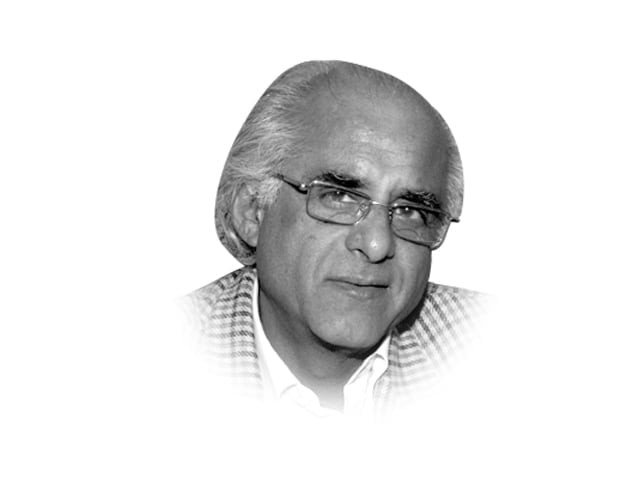Raja Todar Mal’s baradari
Since building was in a lonely, unfrequented spot, Rapacious Morons decided it could only be receptacle for treasure.

The country where the baradari stands was once very picturesque with the Beas River flowing by through a thickly wooded tract near the present town of Chunian. That was when Raja Todar Mal built his pleasure house sometime in the early 17th century. A native of Lahore, the Raja’s family owned large properties around Chunian. It was this man’s admirable acumen as finance manager and administrator that won him place among the Nine Jewels of Akbar the Great.
I first saw this building in 2003, or the year after. As my friend Iqbal Qaiser and I got off the car, the men at work in nearby fields said something about ‘the map’. When I asked my friend, he said I would soon understand.
We climbed up the plinth to the flat-roofed building that had the trappings of Mughal architecture: arches, stylised brackets supporting projecting eaves and exquisite frescoes. For some peculiar reason, this was the only baradari with two wings, separated from each other by a metre or so.
On closer scrutiny, I realised that the building was actually not designed in two wings. It was, in fact, two distinct structures separated in time from each other by about 200 years. The larger building occupying the middle of the plinth was clearly early 17th century, but the smaller one to a side was from the Sikh period.
The ingenuity of the builders of this latter structure lay in the fact that they exactly copied the main baradari. Only the style of the arches was a giveaway. Still, it took nothing away from the setting of the whole; it blended in subtly.
The buildings that looked almost pristine from the exterior had another very sorry tale to tell from the inside. Both had been completely ruined. In the older building, the floor of the main hall was uprooted, the thick walls between the rooms dug into to reveal gaping holes. Even the arches were destroyed. Ditto the smaller building. Here, a couple of the domes had also been bored into and large chunks of brickwork removed to leave yawning openings.
Treasure hunters had been at work, said my friend. Then I understood what the man on the tractor had said laughingly. He had asked if we had now returned with a proper map of the treasure.
Since the building was in a lonely, unfrequented spot, the Rapacious Morons (so many of them running loose) of the land had decided it could only be a receptacle for treasure. So they came with their picks, chisels and hammers and set upon the priceless medieval building. They systematically destroyed it in full view of the likes of the man who thought we had the map.
Surely, someone could have reported it to the local landlord and he in turn to the police. But nothing of the sort happened. Indeed, the police with all its stoolies, who squeal on who is drinking and who is dating, would have heard of the carrying on. Or was it that the touts thought the destruction of national heritage of no consequence? Indeed, what was the worthless DCO-type doing? Did such vandalism not fall under his purview?
The ruin visited upon the building is not the work of a few hours. It would have taken at least a week or 10 days. I cannot imagine that in this time, the unholy din did not attract the attention of even a single concerned local. Are we that dead as a nation?
If anything, the uncaring, frivolous manner in which the man asked if we had the map tells everything about us: this is not our land; we care nothing for it or its heritage. We are here all Arabs, Central Asiatic and Iranians. We came to this land with plundering armies and we are biding our time seeking the moment when we should be able to carry our plundering raids elsewhere.
Published in The Express Tribune, August 4th, 2012.














COMMENTS
Comments are moderated and generally will be posted if they are on-topic and not abusive.
For more information, please see our Comments FAQ